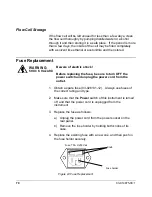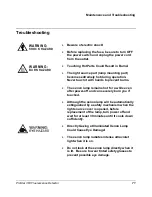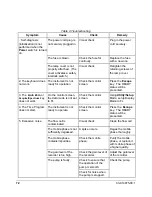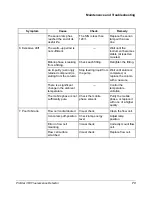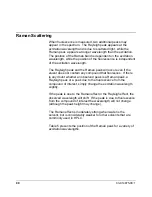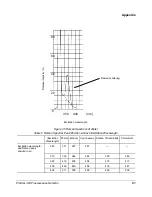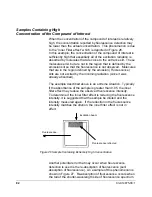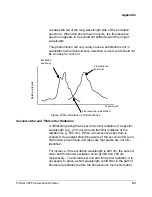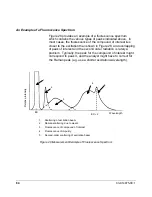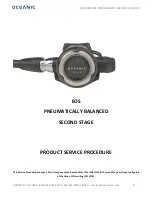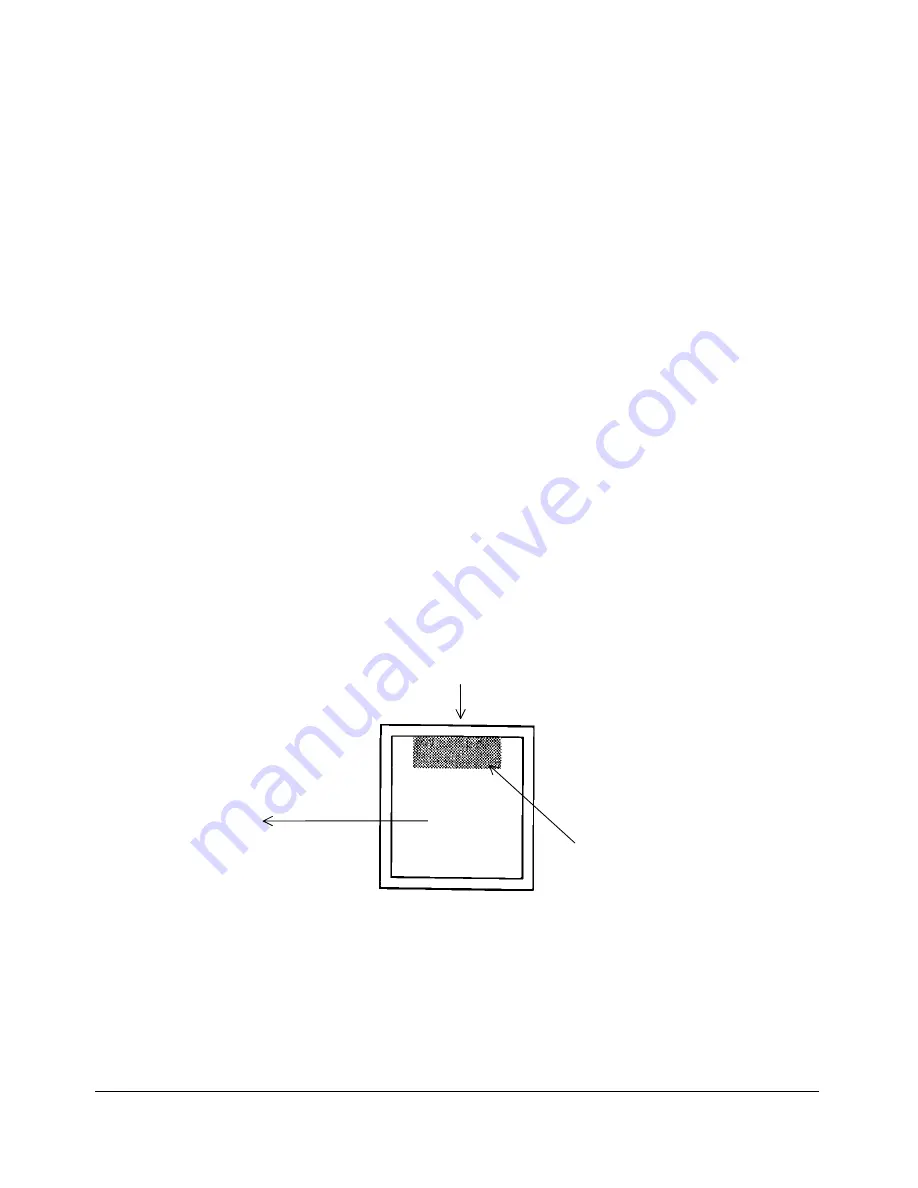
82
03-914875-00:1
Samples Containing High
Concentration of the Compound of Interest
When the concentration of the compound of interest is relatively
high, the concentration reported by fluorescence detection may
be lower than the actual concentration. This phenomenon is due
to the “Inner Filter effect” which is depicted in Figure 26.
In this example, the concentration of the compound of interest is
sufficiently high that essentially all of the excitation radiation is
absorbed by molecules that are close to the entrance slit. These
molecules emit, but are not in the region that is defined by the
emission slit so that the fluorescence is not observed. Molecules
that are in the region defined by the emission (Fluorescence)
slits are not excited by the incoming radiation (since it was
already absorbed).
The example described above is an extreme situation. Typically
if the absorbance of the sample is greater than 0.05, the inner
filter effect may reduce the observed fluorescence intensity.
To determine if the inner filter effect is reducing the fluorescence
intensity, it is suggested that the sample be diluted and the
intensity measured again. If the reduction in the fluorescence
intensity matches the dilution, the inner filter effect is not in
effect.
Figure 26 Sample Containing Extremely High Concentration
Another potential error that may occur when fluorescence
detection is used is the re-absorption of fluorescence (self-
absorption of fluorescence). An example of this phenomenon is
shown in Figure 27. Re-absorption of fluorescence occurs when
the tail of the shorter-wavelength side of fluorescence spectrum
Fluorescence reflected
Fluorescence
Excitation beam
Summary of Contents for ProStar 363
Page 2: ......
Page 6: ...iv 03 914875 00 1...
Page 20: ...14 03 914875 00 1...
Page 82: ...76 03 914875 00 1...



